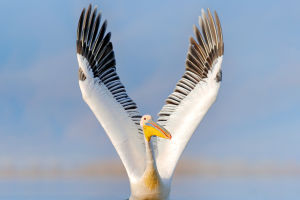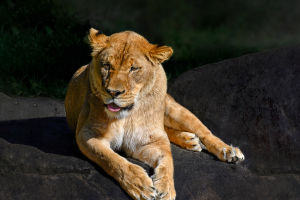The Marvel of Penguin Life
Penguins, iconic flightless birds primarily found in the Southern Hemisphere, are beloved worldwide for their distinctive black and white "tuxedo" appearance and charming waddle.
From their complex social behaviors to their impressive diving skills, penguins showcase remarkable characteristics that make them a favorite for animal lovers and scientists alike.
Habitat and Distribution
Penguins primarily inhabit the cold regions of the Southern Hemisphere, with a significant concentration in Antarctica. However, not all penguins live in icy environments; some species, like the Galápagos penguin, thrive in more temperate and even tropical climates. This unique adaptability allows penguins to colonize various ecosystems, from the frigid Antarctic shores to the sunny coasts of South America and New Zealand.
Physical Adaptations
Unlike most birds, penguins have evolved with wings adapted as flippers, which are perfect for navigating underwater rather than for flying. These strong, paddle-like flippers enable penguins to swim at speeds up to 15 miles per hour. Their bodies are streamlined for minimal resistance in water, and their dense, waterproof feathers offer insulation against cold water, helping them maintain body heat even in freezing temperatures. Their thick layer of blubber also provides extra insulation, particularly for species in colder habitats.
Diet and Feeding
Penguins are carnivores, primarily feeding on fish, squid, and krill. Their diet varies based on location and availability of prey. They often hunt in groups, diving into the water in synchronized movements to herd schools of fish for easier capture. Some species, like the Emperor penguin, travel long distances to reach hunting grounds, while others have ready access to food closer to their nesting areas. Penguins can consume several pounds of food daily, especially before the breeding season, when they need extra energy.
Social Behavior and Breeding
Penguins are known for their social nature, often forming large colonies called rookeries. These colonies, sometimes numbering in the thousands, provide warmth and protection from predators. Penguins also communicate with each other using unique vocalizations, which help mates, parents, and chicks identify each other in crowded colonies.
Conservation and Threats
Penguin populations face threats from climate change, pollution, and overfishing, which disrupt their food supply. Melting ice impacts their habitat, particularly in Antarctic regions, while pollution such as oil spills can be devastating for coastal colonies. Conservation efforts are essential to protect these charismatic birds and include habitat preservation, fishing regulations, and pollution control measures.
Penguins are not only remarkable examples of evolution but also serve as indicators of environmental health. Their ability to adapt to some of Earth’s most extreme conditions is a testament to nature’s resilience, yet they remain vulnerable to human-induced changes in their ecosystems.
So, Lykkers, protecting penguins and their habitats helps ensure these enchanting creatures continue to thrive, bringing joy to future generations and contributing to the balance of their marine environments.
Penguins in 4K / Antartica
Video by 8K VIDEOS ULTRA HD


